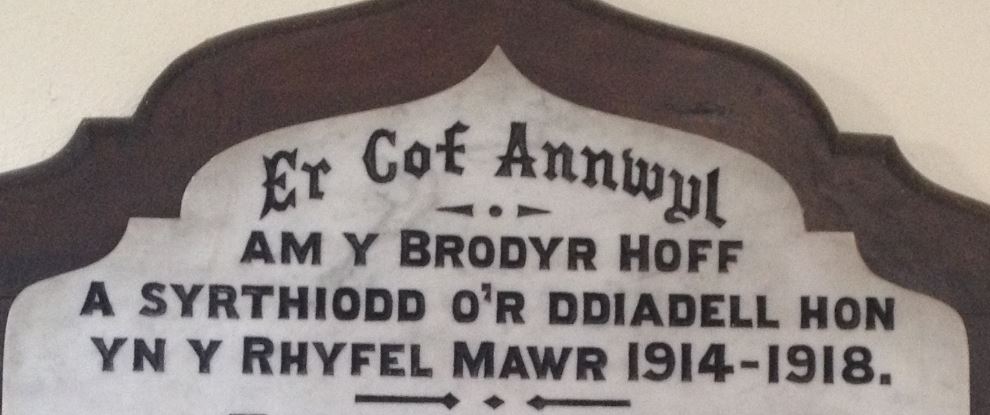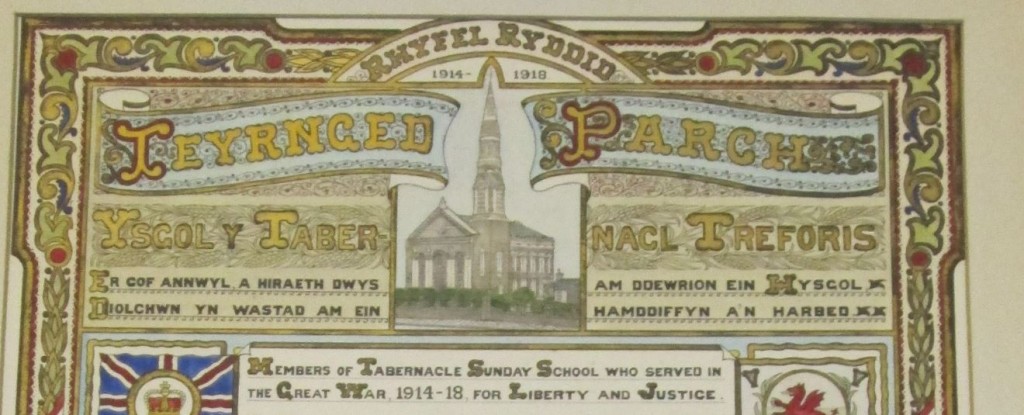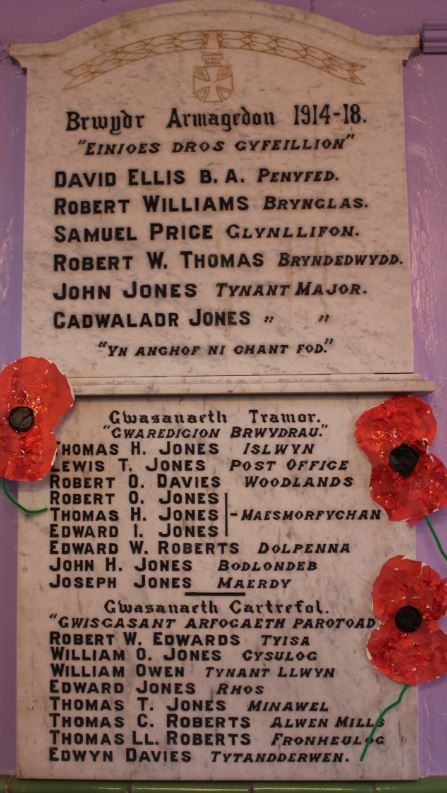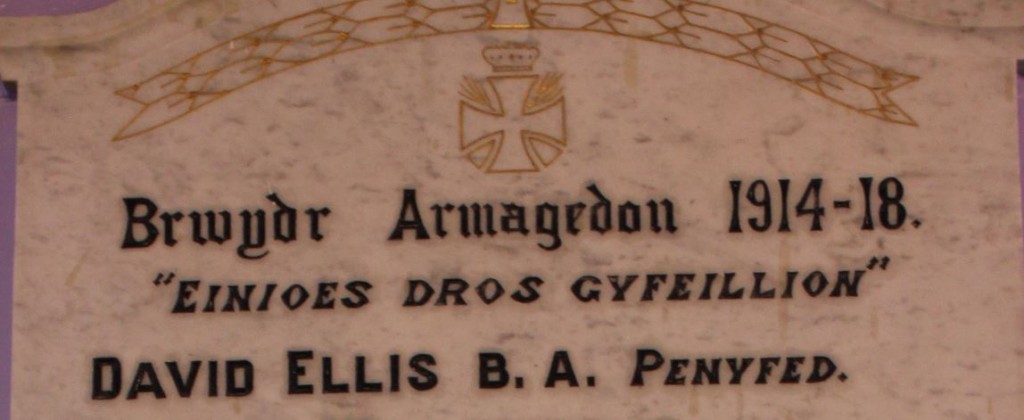The Battle of Armageddon
As the work of collecting details of a large number of Welsh war memorials continues, one aspect that we can study is what the people at the time called the conflict we now know as ‘World War One’. This can give us an indication of how they understood the war at the time.
The most common name is ‘The Great War’ in English / ‘Y Rhyfel Mawr’ in Welsh. This is particularly true of those memorials that were commissioned in the years after the war. See, for example, the memorial in Moriah, Ynystawe.
A minor variation is seen in some memorials which refer to ‘the Great European War’ (such as the memorials of Conway Road Methodist church, Cardiff, Noddfa, Abersychan, or Carmarthen Road, Swansea (below). Similarly, the memorial in Hermon, Pembrey, refers to ‘Ryfel Mawr Ewrop’.
When dates of the conflict are given, the tendency is to note ‘1914 – 1918’, although some, such as the memorials in Bethel, Sketty or Mount Pleasant, Swansea, give ‘1914 – 1919’ (which reflects that fact that it was just an Armistice in November 1918, with the Peace Treaty being signed the following year).
 In some chapel memorials, however, there are alternative names given to the conflict. The Roll of Honour in the Tabernacl, Morriston, refers in Welsh to ‘Rhyfel Rhyddid’ (‘The War of Freedom’), and in English, ‘the Great War, 1914-18, for Liberty and Justice’. It is worth pausing to reflect upon this declaration: it reminds us that people at the time could come to the conclusion that this was a war for fundamental principles, and thus a just war.
In some chapel memorials, however, there are alternative names given to the conflict. The Roll of Honour in the Tabernacl, Morriston, refers in Welsh to ‘Rhyfel Rhyddid’ (‘The War of Freedom’), and in English, ‘the Great War, 1914-18, for Liberty and Justice’. It is worth pausing to reflect upon this declaration: it reminds us that people at the time could come to the conclusion that this was a war for fundamental principles, and thus a just war.
There is another label given to the war in the Methodist chapel in Dinmael, in Uwchaled, Conwy county borough: ‘Brwydr Armagedon 1914-18’ – ‘The Battle of Armageddon 1914-18’.
So far, this is the only memorial that has come to light which refers to ‘Armageddon’, but it reflects how people were referring to the war at the time. It is possible to trace the use of the word ‘Armageddon’ (‘Armagedon’ in Welsh) in the Welsh newspapers of the war years by using the tremendous online collection organised by the National Library of Wales. There is some discussion of this in my forthcoming volume Creithiau, which will be published by the University of Wales Press in August. However, the graph below did not make it into the final version:
Frequency of appearance of the word ‘Armagedon’ in the Welsh Newspapers Online collection, 1914 i 1918, by three-monthly periods
It is clear from this that there were only a few references to ‘Armagedon’ in the months before the start of the conflict, but many instances during the months of the war, with peaks in the first months, and during the Second Battle of Ypres, the Battle of the Somme and the bloody final months in 1918.
Thus, as they looked back upon the catastrophic four and a half years, it was natural for the chapel-goers of Dinmael to use Biblical language, and to compare the conflict to the battle described in the Book of Revelation as the cataclysm at the end of the world.
 Two more aspects of this memorial to note: first, look at the extraordinarily high proportion of men with the surname Jones – 12 out of 23. It is not surprising that this memorial (like many others in rural Wales) gives the farm name as well, to differentiate between the men with similar names.
Two more aspects of this memorial to note: first, look at the extraordinarily high proportion of men with the surname Jones – 12 out of 23. It is not surprising that this memorial (like many others in rural Wales) gives the farm name as well, to differentiate between the men with similar names.
Secondly, note the first name on the list: David Ellis, B.A., Penyfed. This is the poet David Ellis, referred to as ‘y bardd a gollwyd’ – ‘the poet that was lost’, who served with the Welsh unit of the RAMC. See, for example one of his poems here and one of his letters here. He disappeared while serving in Salonica in June 1918.
g.h.matthews June 27th, 2016
Posted In: Uncategorized



